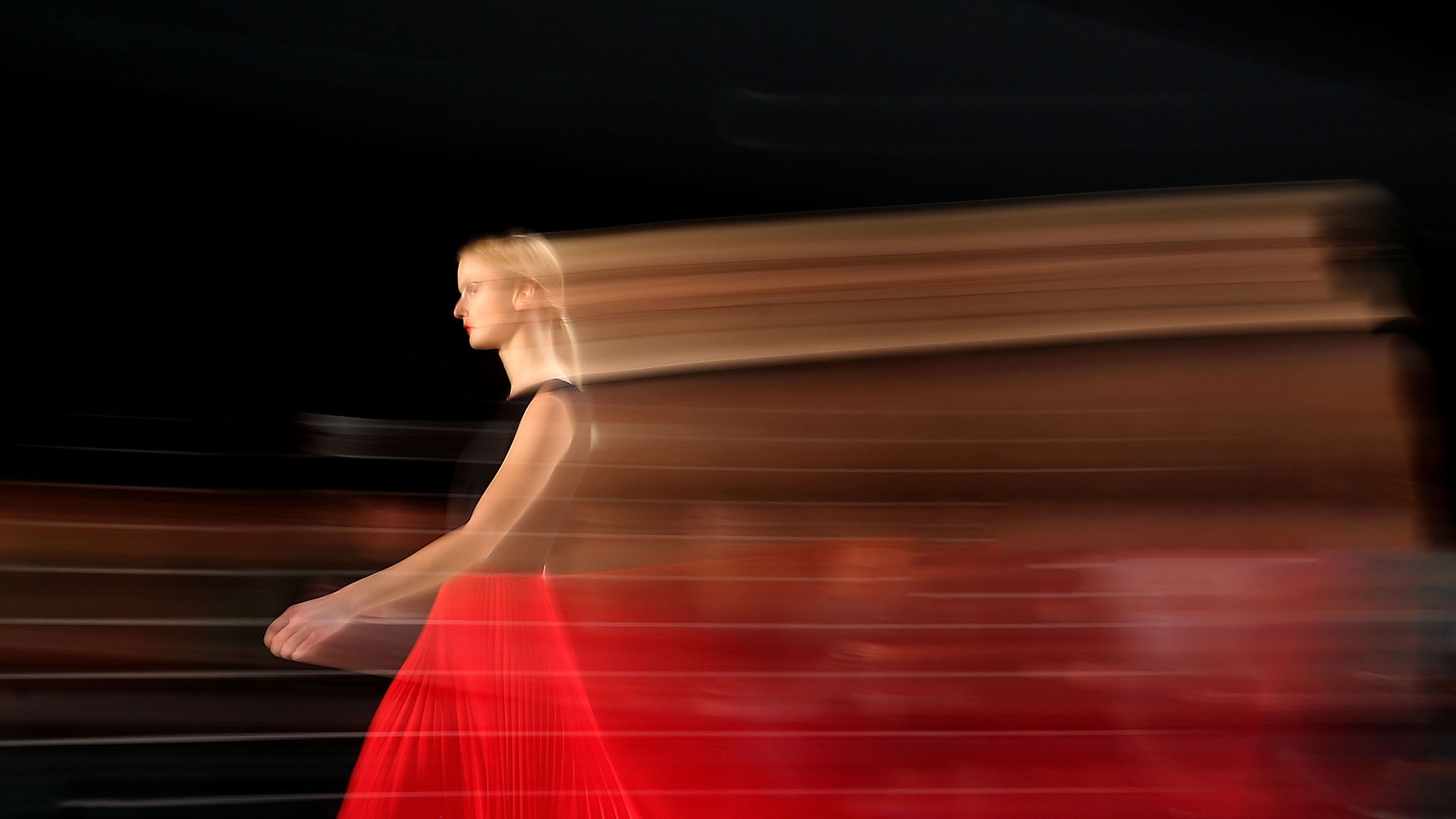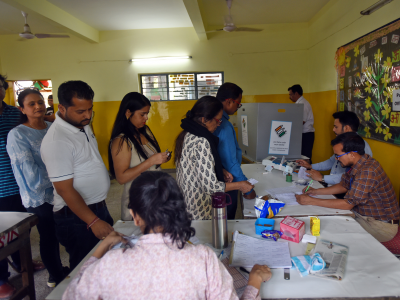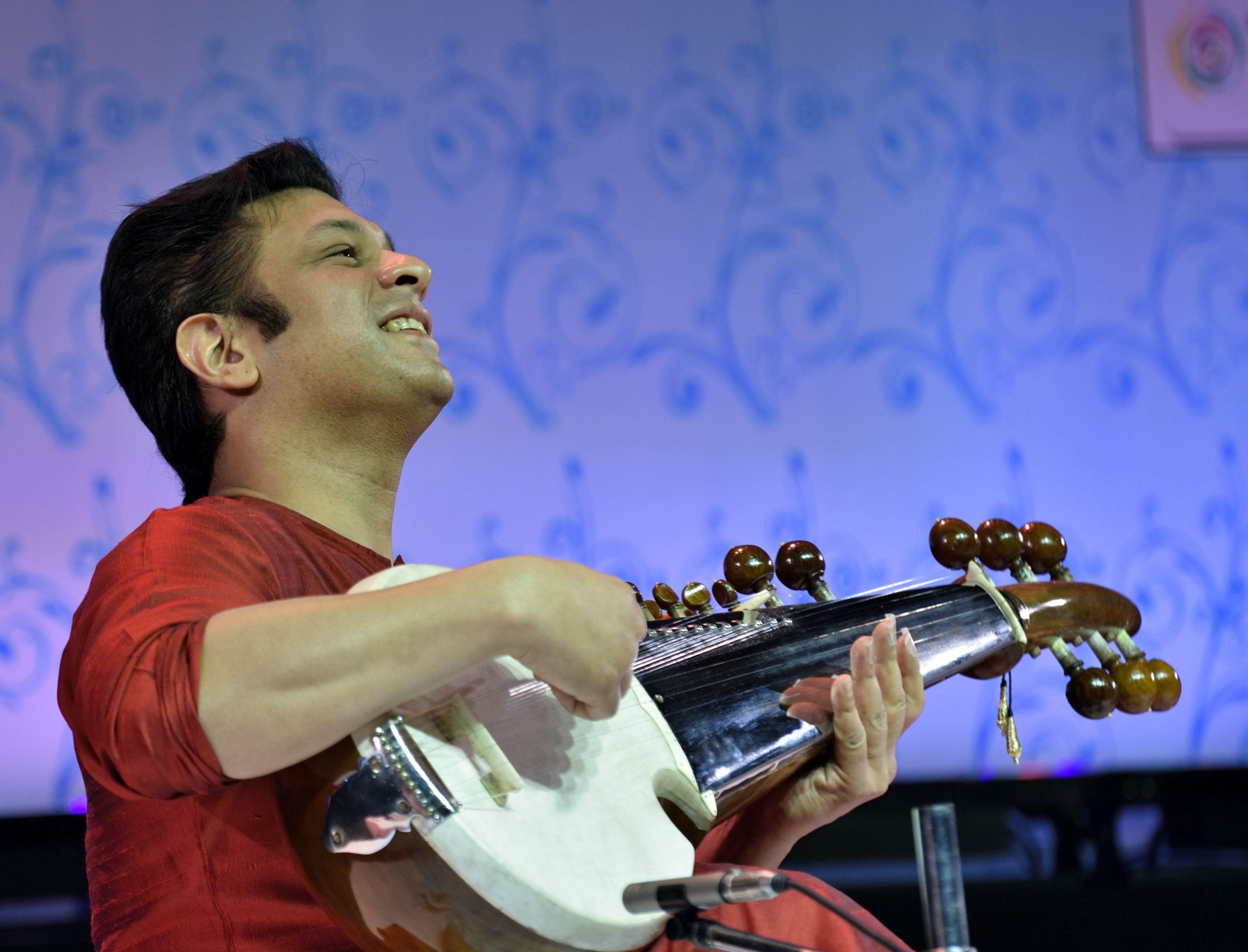As the pandemic redefines the new ‘normal’, the fashion industry this season is doing away with physical shows and entering the digital space
A hand-embroidered lehenga following the model’s gait and reflecting the sparkle of multiple spotlights. Models arriving one after the other, in jewel-coloured ensembles leaving the audiences cheering and Instagramin’ the fashion gala. The after-party, schmoozing and the million people that happen to fit into the backstage taking care of all that happens on the ramp –– this could have easily been a scene from a fashion show in India but we no longer live in the times where a setting like this would be deemed legal.
However, FDCI’s recent Instagram teaser of a model walking in a similar outfit created in a CGI format has everyone in the fashion industry talking. A digitally rendered silver figurine walking in traditional Indian attire in a land far far away is not a distant reality for mainstream Indian fashion anymore.
Even six months ago, when our Nordic counterparts were busy getting rid of physical fashion events, there was a fashion week cropping up in every other town of India. And now that the concept of a physical fashion week with a venue full of fashionistas, designers, pilling clothes and spilling drinks is rendered redundant, FDCI’s recent announcement of a digital-only edition of the India Couture Week is a refreshing development. Scheduled to take place between 18 and 23 September, the event will have a list of designers presenting their new collections in an audiovisual format.
An important component of the fashion scene of any country, a fashion week is instrumental in setting the tone of a season that trickles down to what everyone in the country ends up wearing – courtesy the knockoff market and those who make cheap copies of ‘designer lehengas’. and make them available to the masses. Well, it all starts somewhere.
But this is going to be the first time when there will not be a dedicated gathering. These shows will be available for everyone to watch from the comfort of their homes, even the presenting designers.
Sunil Sethi, the president at Fashion Design Council of India is as excited as a young lad about the new format. Upon learning the term CGI on a telephonic interview, he is quick to ask what it meant. “So CGI means Computer-Generated Imagery right?,” asks Sethi with his evident childlike curiosity.
When asked about the shift from physical to digital, he proffers that it did not happen voluntarily – much has changed about society and how people interact with each other. “This is new to us,” tells Sethi, hinting at how the pandemic has affected the yearly fashion schedule globally.
He carefully explains the relevance of a computer-generated model at a time where social distancing is important. He says that a digital rendition of a model walking on a ramp in designer clothes is as good as a physical space with real models.
Talking about what the shows will be like, he goes on to describe that they will be delivered as per a schedule every day for a week where a pre-recorded video will be telecast live on FDCI’s digital platforms. Sethi shares that the CGI fashion show was initially planned two months ago when he could not imagine doing a proper show. But as people have now started leaving their houses for work and important visits, he with his team decided to instead enable designers to video record their presentations as per their liking under the guidance of FDCI. These presentations will eventually be shared on the day of the show.
He calls this a ‘phy-gital’ kind of show where a bare minimum of people gather together to document a collection in a way that can digitally be shared with ‘n’ number of people online.
He further says that the designers are shooting their collections on models in spaces like forests and indoor spaces that depict the idea of their theme for the season. In his understanding, the 20-minute excitement that they create for a select few in a venue-based show can now be shared with as many people as those willing to view it on their devices.
Fashion being a glamour-driven industry sustains a lot on the face value of things, thus a retouching of imagery is an important part of the process. Be it models or garments, or the race to look a certain way, humans have after all become a carefully crafted internet version of themselves. In this scenario, they are not so different from artificial reality on a computer screen. Like Miquela, an LA-based CGI influencer made with the help of computer programming to look, behave and interact as good as a human.
Anju Modi, a veteran designer known for her costumes in movies like Ram Leela and Bajirao Mastani, has a simple thought in her mind that helped her adapt to this new couture presentation. She says, “People need to get married. How do we adapt ourselves?”
Being a senior industry member, she has a sense of clarity and patience in the way she puts her point across. “We are not the first to do this digital-only show, it has happened before internationally.” She adds that she looks forward to cost-cutting and to avoiding the unnecessary expenses and clutter that takes place at the time of a show.
“For me it’s a blessing in disguise”, she adds.
Fashion designers rarely get to watch their own show as they are always busy with last-minute fittings and have to eventually take the final bow. But this time they can be in their close intimate space and view it as an audience and see the end-product of their hard work come to life.
In her opinion, a digital-only show would be good encouragement for her prospective clients to visit her store to see the garment in-person. She is positive about this transition. “Brides want their attires to be stylised in a certain way. Couture never gets sold off the rack. I look forward to meeting clients through appointments. We are happy to attend them personally.”
She also believes that it is her responsibility to take care of her craftsmen back in the villages at a time when people in the cities are losing work. These artisans serve as the backbone of the craftsmanship that goes in her work.
As a designer, she has travelled to various parts of India and has extensively worked with each craft cluster. She is unable to choose her favourite amongst the multitude that she has worked with. “There is no way I can choose one, but we often follow with weaving in MP, dyeing in Gujarat and embroidery in UP. Also, there is Hyderabad, Maharashtra, Assam, and Rajasthan.”
On being asked if she would miss doing a physical show, she is quick to answer that she does not miss it at all. She discusses the impossible task of assigning front seats to her guests. “My friends tell me that they will only come if it’s a front row. There is no way I can accommodate everyone in the front row.” She is happy she doesn’t have to do it this time.
Her collection this season is about an innocent girl flowering and getting married to lead a happy fulfilling life with her man. She calls the collection Sinduri. “The collection has a very contemporary lyrical feel to it”, she adds.
She concludes by saying that there are alterations she has made to her product as a result of the times we live in. “The collection comprises textile-based stylised pieces, almost like an heirloom from a bride’s grandmother that she can wear later in life.”
Rahul Mishra who presented his couture collection at Paris Haute Couture Week back in January and then in July became the first Indian to do so. He recounts, “I must say, it was a quite unique experience to showcase digitally at the Paris Haute Couture Week. Almost, the same amount of work and stress went behind it and well, there was a level of nervousness that came up, right before the live stream. The pandemic has affected all of us deeply on the psychological front, but couture has been a ray of light.” For him creating couture for these shows has been motivating for him, to be able to begin dreaming again. “It has been nice to regain a purpose through the lockdown and do what we love the most, together with our work family”, he adds.
Until his recent couture show, he considered himself a purist and had great faith in a physical show with its multi-sensory elaborate setting as the ideal way of showcasing his work. But now he seems to have changed his mind and values the pros of a digital show. He says, “I feel that only ten seconds of a garment fleeting past you at the catwalk can be replaced with these multidimensional fashion films that one can zoom-in to see the details the designer wants to showcase, and also tell the story that would otherwise be missed. I feel that this kind of storytelling must continue to be relevant, even when the brands aren’t completely dependent on them; this way of expression shall be explored further for its capabilities.”
(Cover: Fashion weeks, that are the core of the fashion industry are all set to be digitised in the wake of the Coronavirus pandemic in India)





